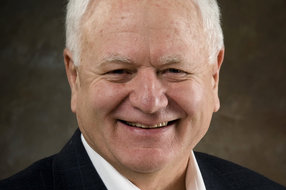Philadelphia is knee-deep in more than just snow.
The inaugural Philagrafika 2010, which launched on Jan. 29 and runs through April 11, is celebrating print media in contemporary art by showcasing more than 300 artists at 88 art institutions throughout the city. Organizers say it is one of the largest arts events in the country, and they hope to make it a recurring event.
Among Philagrafika’s LGBT artists is Mark Bradford, who collects urban materials such as posters with advertising geared toward disadvantaged communities to create works of art that address issues of race and class. His past work included a 22-foot-tall ark built out of debris from Hurricane Katrina.
Philadelphia-based out artist Virgil Marti confronts issues like the insecurities of growing up gay. His “Bully” exhibition is a wallpaper installation comprised of the yearbook photos of the kids he says bullied him in high school.
Mixed-media artist Eric Avery is an openly gay doctor who lives and works in Galveston, Texas. He’s an HIV/AIDS specialist and an associate professor of psychiatry and behavioral sciences at the University of Texas — and holds a bachelor’s degree in art.
Avery says he always tried to merge art and medicine.
“I’ve always made art since I was a child. I’ve always wanted to be a doctor and go help the world, but I was always so good at art. I got accepted into a medical school that was taking in different people in the 1970s to try to turn out a doctor. And one thing led to another. Everybody said you can’t do art and medicine together. I’m kind of an obstinate person and I said, why not? I’ve made art all through my medical school. Everything suffered because I was always doing art. I’ve always done it. I had to become a really good doctor in order to legitimately say I can do both of these things. I can talk in two worlds. It’s neither fully art nor fully medicine. It’s kind of suspended, like a transsexual is often between.”
Avery uses his art as an opportunity to combat the AIDS epidemic and, of all the works in Philagrafika, his carved toilet seats are bound to be the most talked-about: The seats feature the raised words “Abandon all hope ye who enter here.”
No subtlety in this message.
“It gets into poop and pee and the stuff from our unconscious from everything in the bathroom and privacy,” he said. “My partner from the beginning felt that this was kind of on the obscene side. Safe sex and anal sex would be the point of that toilet seat. One of my patients, when I talked to him about that piece, said the top [of a person], who would be reading it, is at less risk than the bottom would be in terms of unprotected sex. I think that toilet seat would be really great in a gay bar. If you’re trying to deal with HIV and getting the message and reminding people in new ways, I think that toilet seat could work.”
In addition to the etched toilet seats, Avery’s contribution to Philagrafika includes three prints and a copy of his book, “Recipes For Disaster,” printed on handmade paper, on display at The Print Center, 1614 Latimer St.
For more information about the many artists and venues featured in Philagrafika 2010, visit www.philagrafika.org.
Larry Nichols can be reached at [email protected].
